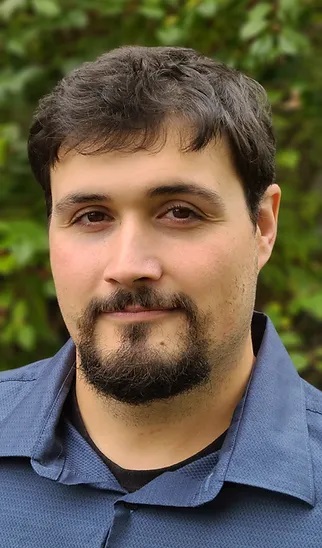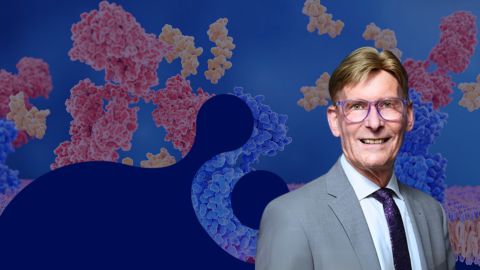
Brain-on-a-chip tech powers neuroscience research
A tiny device that fits into the palm of your hand may hold the key to recreating one of the body’s most intricate systems: the brain and its vascular network.

Brian O’Grady, a postdoctoral fellow at Vanderbilt University and an American Society for Biochemistry and Molecular Biology Maximizing Opportunities for Scientific and Academic Independent Careers, or MOSAIC, scholar, has developed a method to isolate blood vessels from postmortem human brain tissue and cultivate them in a hydrogel that mimics the brain’s natural environment. He calls this system a brain-on-a-chip. It’s about the size of a house key.
While pursuing his master’s degree in biology, O’Grady found himself craving more hands-on, practical work. He loved getting his hands dirty and repairing things, like his perpetually broken prized possession: a 1971 Corvette. So, he built a career in materials science and biomedical engineering.
“I really wanted to engineer solutions or create engineering components to solve important biological questions," O’Grady said.
But, what to build? He set his sights on creating a model system to test drugs for brain cancers such as glioblastoma.
Because the human brain is so complex, “clinical trials often fail,” O’Grady said. “They have over a 95% failure rate. It's just incredibly bad, so we need better models."
Historically, artificially recreating the extracellular matrix of the brain has stumped scientists because it contains dozens of components including glycosaminoglycans, proteoglycans, tenascins, collagens and more.
O’Grady’s setup overcomes this challenge using an essential molecule, N-cadherin peptide. This peptide bolsters the extracellular matrix of the brain-on-a-chip system and promotes cell survival and maturation.
“We used the peptide to trick neural cells into thinking that they're surrounded by other neural cells,” O’Grady said. “Normally cells in the brain are really, really tight and touching each other, so there's sort of a handshake between the cells. So, we took the peptide and put it on the backbone of the hydrogel, and the neural cells think they’re surrounded by other neural cells despite being surrounded by hydrogel.”
O’Grady’s brain-on-a-chip offers an unprecedented way to simulate the human brain’s vascular structure that could revolutionize drug testing and disease research, paving the way for advances in neuroscience and biotechnology.
He said he hopes this model system will improve the success rates of clinical trials by enabling preclinical testing in an environment that better recapitulates the elusive properties of the blood–brain barrier.
(Farah Aziz Annesha contributed to this article.)
Enjoy reading ASBMB Today?
Become a member to receive the print edition four times a year and the digital edition monthly.
Learn moreGet the latest from ASBMB Today
Enter your email address, and we’ll send you a weekly email with recent articles, interviews and more.
Latest in People
People highlights or most popular articles

Embrace your neurodivergence and flourish in college
This guide offers practical advice on setting yourself up for success — learn how to leverage campus resources, work with professors and embrace your strengths.

Survival tools for a neurodivergent brain in academia
Working in academia is hard, and being neurodivergent makes it harder. Here are a few tools that may help, from a Ph.D. student with ADHD.

Quieting the static: Building inclusive STEM classrooms
Christin Monroe, an assistant professor of chemistry at Landmark College, offers practical tips to help educators make their classrooms more accessible to neurodivergent scientists.

Hidden strengths of an autistic scientist
Navigating the world of scientific research as an autistic scientist comes with unique challenges —microaggressions, communication hurdles and the constant pressure to conform to social norms, postbaccalaureate student Taylor Stolberg writes.

Richard Silverman to speak at ASBMB 2025
Richard Silverman and Melissa Moore are the featured speakers at the ASBMB annual meeting to be held April 12-15 in Chicago.

Women’s History Month: Educating and inspiring generations
Through early classroom experiences, undergraduate education and advanced research training, women leaders are shaping a more inclusive and supportive scientific community.

